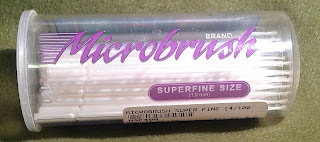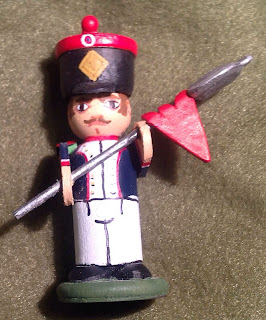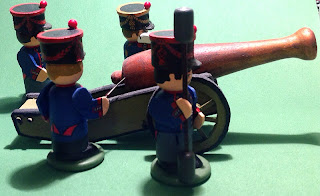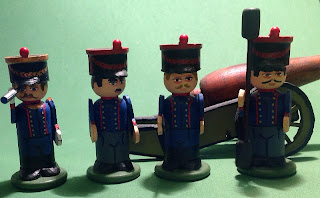I started by using a drafting circle template to draw a circle on a foam sheet. I figured out which circle to use by simply holding the wooden figures head inside of the circles in the template until I found one the right size for the hat and another for the hole in the center where the head would go. I then cut the larger circle out of the foam and the smaller circle out of the center of the larger circle.
The next step was to pull the foam down over the head to the neck. Note that the center hole is slightly smaller than the diameter of the head, so the hole stretches and then snaps back.
It is important to pull down and then pull back up because you want the cupping of the hat to go upward, as in the figure below. Make sure the bottom is as even as possible, unless you are going for a cocked hat look (which is always good for variation).
Carefully use thinned white glue to keep the hat in place. Note that I used a micro brush applicator to lay down the glue and to sop up some of the excess (after this picture was taken).
Here are the micro brush applicators that I use. These were purchased from Micromark and although they are very expensive, I have had these for awhile and typically reuse them. (They also served as scrap plastic. I used one as the telescope for my French Napoleonics artillery officer.)
After the glue has set enough for the hat not to move, but before completely dry, I added two spots of Gorilla Glue Superglue to glue the sides to the head. You can start to see the three corners taking shape, which is where the tricorne name ("tri-cornered hat") comes from.
A little more superglue on the rear to bring up that flap.
Yet more superglue on the front-left and front-right to get more of a "point" on the front corner.
Here is the tricorne painted up, giving you a better idea of how it looks.
 | 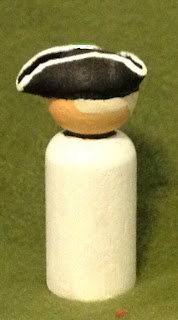 | 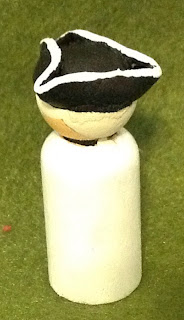 |
| Front View | Side View | Rear View |
If you are a tricorne aficionado you will probably note that it is closer in appearance to earlier tricornes (War of Spanish Succession, Great Northern War, War of Austrian Succession, etc.) and less like that in the American War of Independence. I strongly suspect that the pattern for tricornes (or bicornes, for that matter) is not a perfect circle, but an elliptical shape. I would require more study.
So, am I going to get into a new period? No, not yet. I need to get more Napoleonic troops ground out and "finish" that period.
I will probably use this same technique to make big floppy hats for Musketeers, a skirmish period I have wanted to game in for awhile.




